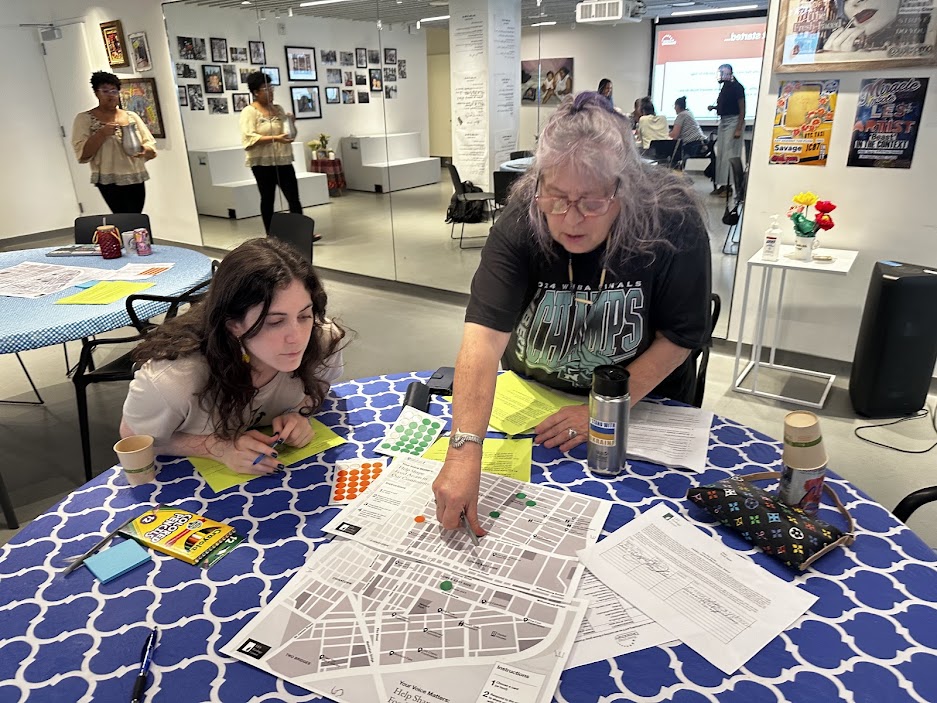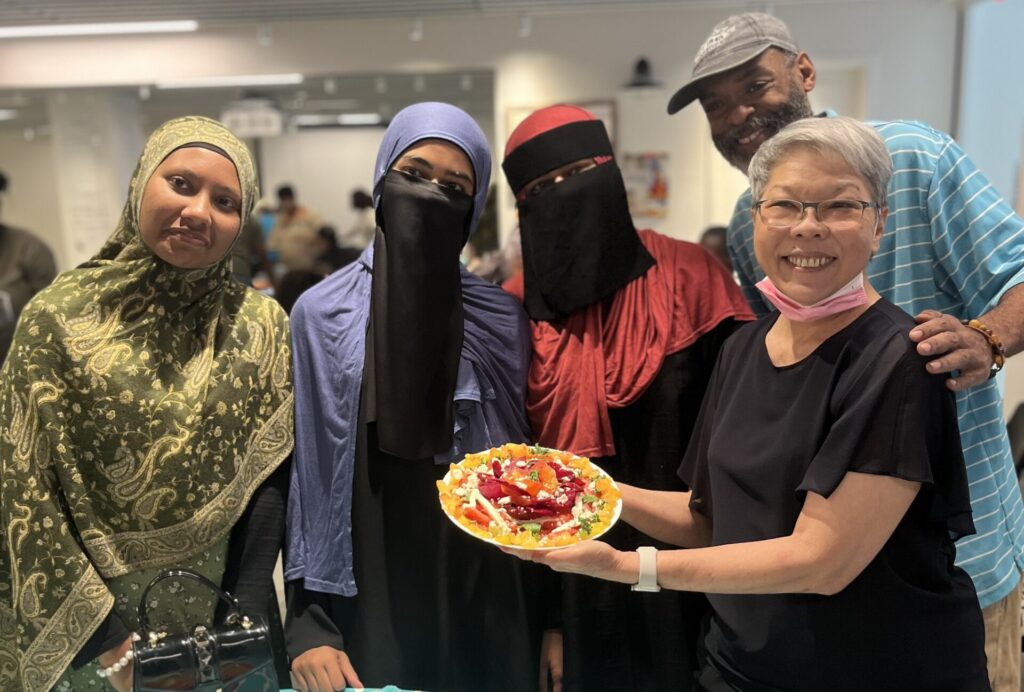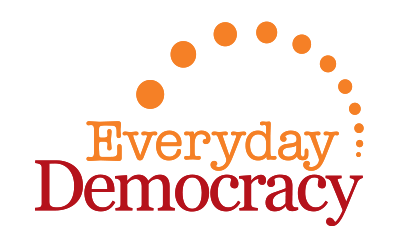Arts, Culture, & Democracy
Mapping the Path to Food Justice
In July, the Lower East Side Ecology Center partnered with Everyday Democracy and the Center for Wellbeing & Happiness through the Nourishing Communities: Food Justice & Advocacy series to help neighbors imagine and act toward a more just food system. Together, we used civic imagination—the practice of envisioning what a better future could look like and mapping steps to get there—as a tool for both creativity and collective action.
Food justice—ensuring equitable access to healthy, affordable, and culturally relevant food while addressing who grows, distributes, and consumes it—was at the heart of this gathering. Since 2021, the LES Ecology Center’s Food Justice Program has given youth and older adults hands-on opportunities to grow, cook, and share food while exploring how food systems shape community, individual, and environmental health.

Workshop participants map food access points within their neighborhood in New York’s Lower East Side.
Everyday Democracy guided storytelling and perspective-taking exercises to make the most of the intergenerational space. In small groups, participants imagined the LES ten years from now through the eyes of a youth, elder, or parent. A young person described being denied access to a school garden; an elder recounted a cooking accident and the need for groceries they could safely prepare. Listening to one another deepened participants’ understanding of each other’s challenges, built solidarity, and uncovered shared experiences.
From there, residents moved from vision to action. Using visual aids, they mapped their existing streets, gardens, and markets, envisioning new spaces for growing, selling, and sharing food. Ideas ranged from community-supported gardens to floating urban farms, and participants explored the resources and leadership needed to bring these visions to life.
To ground their ideas in practice, small groups prepared meals with locally sourced ingredients—linking the vision of a just food system with tangible, collaborative work. Everyday Democracy then helped participants identify concrete next steps. As a result, 77% of participants plan to volunteer locally, nearly nine in ten committed to supporting local food producers, and a significant majority intend to civically engage by following their local council member on social media.
“Everyday Democracy’s partnership helped participants feel empowered to identify solutions-based actions. The workshop invited curiosity about advocacy while providing a framework to think through food justice. Dialogue had depth and nuance, which came organically from the activities offered.”
— Kiera Del Vecchio, Center for Well-Being and Happiness
By imagining and acting together, neighbors not only explored food access solutions—they practiced democracy. Civic imagination, grounded in equity, strengthens a community's ability to make decisions collectively, exercise agency, and build systems that work for everyone.

Neighbors at the LES Ecology Center share a plate of locally-sourced produce as part of Everyday Democracy’s food justice workshop.
Activating Civic Imagination
Consider the tips below for sparking civic imagination in your community:
- Celebrate specificity: Center the unique experiences of individuals and groups to uncover universal lessons and create solutions that meet everyone's distinct needs, in the spirit of targeted universalism.
- Use storytelling: Encourage participants to share personal narratives to build empathy, understanding, and a shared vision for action.
- Practice perspective-taking: Invite participants to see through the eyes of others—neighbors, community members, or different age groups—to see challenges and possibilities from multiple viewpoints.
- Visualize and map ideas: Use maps, diagrams, or physical layouts to make abstract concepts tangible and spark collaborative thinking.
- Play, imagine, and act: Use humor, games, and creative "what if" exercises to spark imaginative thinking and envision new ways of being.
- Turn imagination into action: Help connect creative ideas to real-world solutions by building action plans, identifying paths forward, and mapping steps to achieve them. These exercises help individuals see their own power and ability for collective problem-solving.
